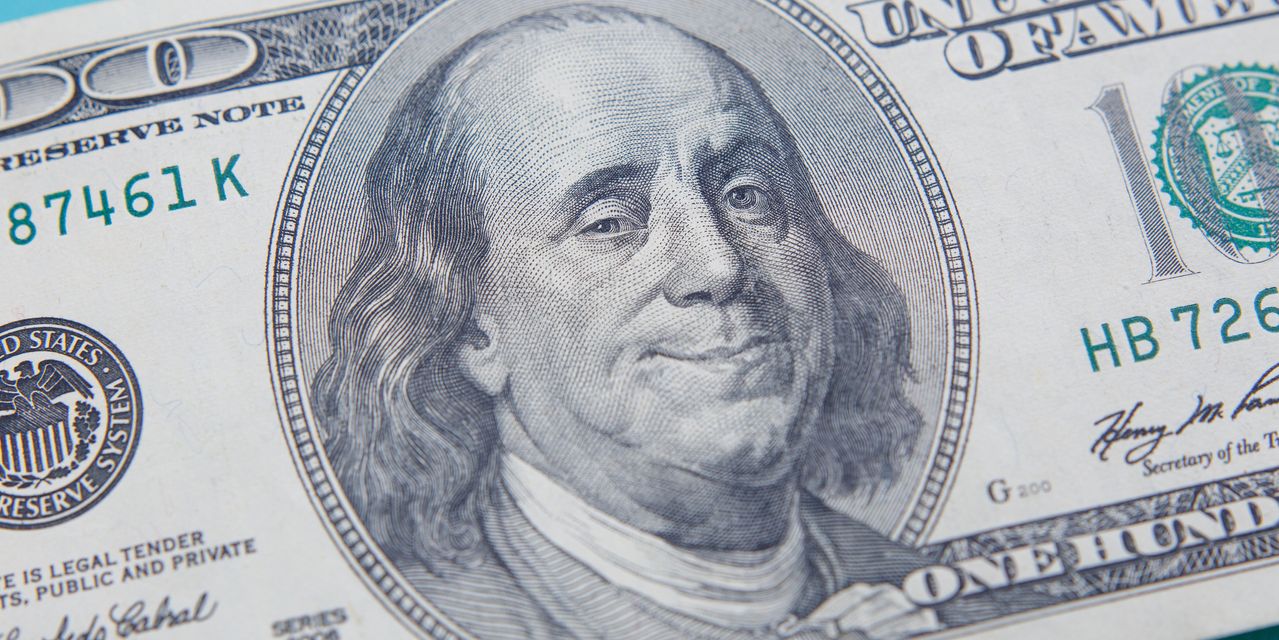Is ‘King Dollar’ making a currency-market comeback? It’s starting to look that way.
A closely-followed gauge of the U.S. dollar’s value relative to other major currencies is on the cusp of breaking above its 200-day moving average for the first time since Dec. 6, 2022, Dow Jones Market Data show.
Currently trading at 103.45, the ICE U.S. Dollar Index
DXY
only needs to settle above 103.54 to bring to an end a streak of 173 trading days below the 200-day average. According to Dow Jones data, this has been the dollar’s longest stretch below the 200-day moving average since a 209-day streak that ended on March 25, 2021.
Market analysts watch for breaks above and below moving averages as a sign that a given asset or currency is nearing a trend change.
Breaking above the 200-day average would mark the latest milestone in what has been an unexpected summertime turnaround for the greenback — the latest chapter in what has been a volatile 18-month stretch.
After trending lower for months, the dollar index has risen 3.7% from its 2023 closing low from July 13, based on the value of the dollar index.
The dollar has been sliding since late September, when the dollar index touched its highest level in more than 20 years. While global stocks and bonds sold off last year, betting on a stronger U.S. dollar was one of the few trades that generated profits for investors. Between the start of 2022 to the dollar’s September peak, the dollar index gained nearly 20%, FactSet data show.
As the currency has climbed since mid-July, traders who had piled into short-dollar positions earlier this year may be starting to feel the pain as the market moves against them, said Matt Miskin, co-chief investment strategist for John Hancock Investment Management, during a phone interview with MarketWatch.
A break above the 200-day moving average could push the dollar even higher, if recent history is any guide.
“Since 2020, breaking above the 200-day has always seen some meaningful follow-through,” said Steve Englander, head of North America macro strategy at Standard Chartered, during an interview with MarketWatch. “This is definitely something the market will be looking at.”
Englander noted that when the dollar broke above its 200-day moving average in March 2021, it continued to climb by nearly 25% until it reached its late-September 2022 peak.
Given the dollar’s central role in the global financial system, an ascendant greenback could have a wide-ranging impact on markets. For example, it could weigh on prices of stocks, bonds and commodities like it did in 2022, Miskin and Englander said.
This dynamic has already started to play out over the past three weeks as stocks and bond prices, which move inversely to yields, have fallen. Commodities like gold
GC00,
have also softened in the face of a stronger dollar, while crude prices
CL00,
look likely set to record a weekly pullback for the first time in two months.
A strong dollar could hurt corporate earnings, which could make it harder to justify stocks’ valuations, which are still lofty relative to history.
“S&P 500 firms have a significant exposure to foreign revenues, especially the big technology firms,” Miskin said. “So when the dollar rises, they’re bringing back weaker revenues.”
FactSet data show S&P 500
SPX
firms generate roughly 40% of their revenue abroad, with China being the biggest market outside the U.S. Recently, the Chinese yuan has seen significant weakness compared with the dollar as a stalled post-COVID-19 economic recovery and problems in the domestic real-estate sector have weighed on both Chinese stocks and the yuan. Over the past month, the S&P 500 has fallen 3%.
Chinese yuan
USDCNY,
trading in the domestic “on shore” market fell to 7.3 to the dollar on Thursday, touching the weakest level against the greenback since late 2007, FactSet data show.
A few factors are contributing to dollar strength, including signs that the U.S. economy is in better shape than both China and Europe. A real-time GDP forecast from the Atlanta Federal Reserve shows the U.S. economy expanding by 5.8% during the third quarter, a pace that almost nobody anticipated a year ago. By comparison, China is on the cusp of deflation, official data show, while the eurozone economy has been sluggish since recording two straight quarters of GDP contraction.
Strong economic growth could cause inflation in the U.S. to re-accelerate though, economists say, which is helping to boost the dollar by driving Treasury yields, including inflation-adjust “real yields,” higher, Miskin said.
Expectations that interest rates in the U.S. could remain higher than those in other major economies, including Europe, the U.K. and Japan, for longer are also helping bolster the currency.
The 10-year Treasury yield
BX:TMUBMUSD10Y
broke above 4.3% this week to trade at its highest level since the 2008 financial crisis, FactSet data show.
Read the full article here





